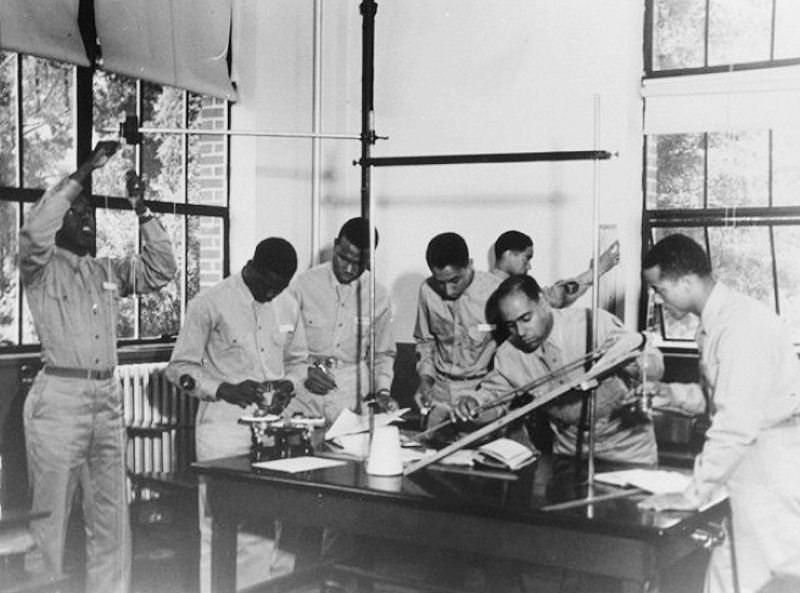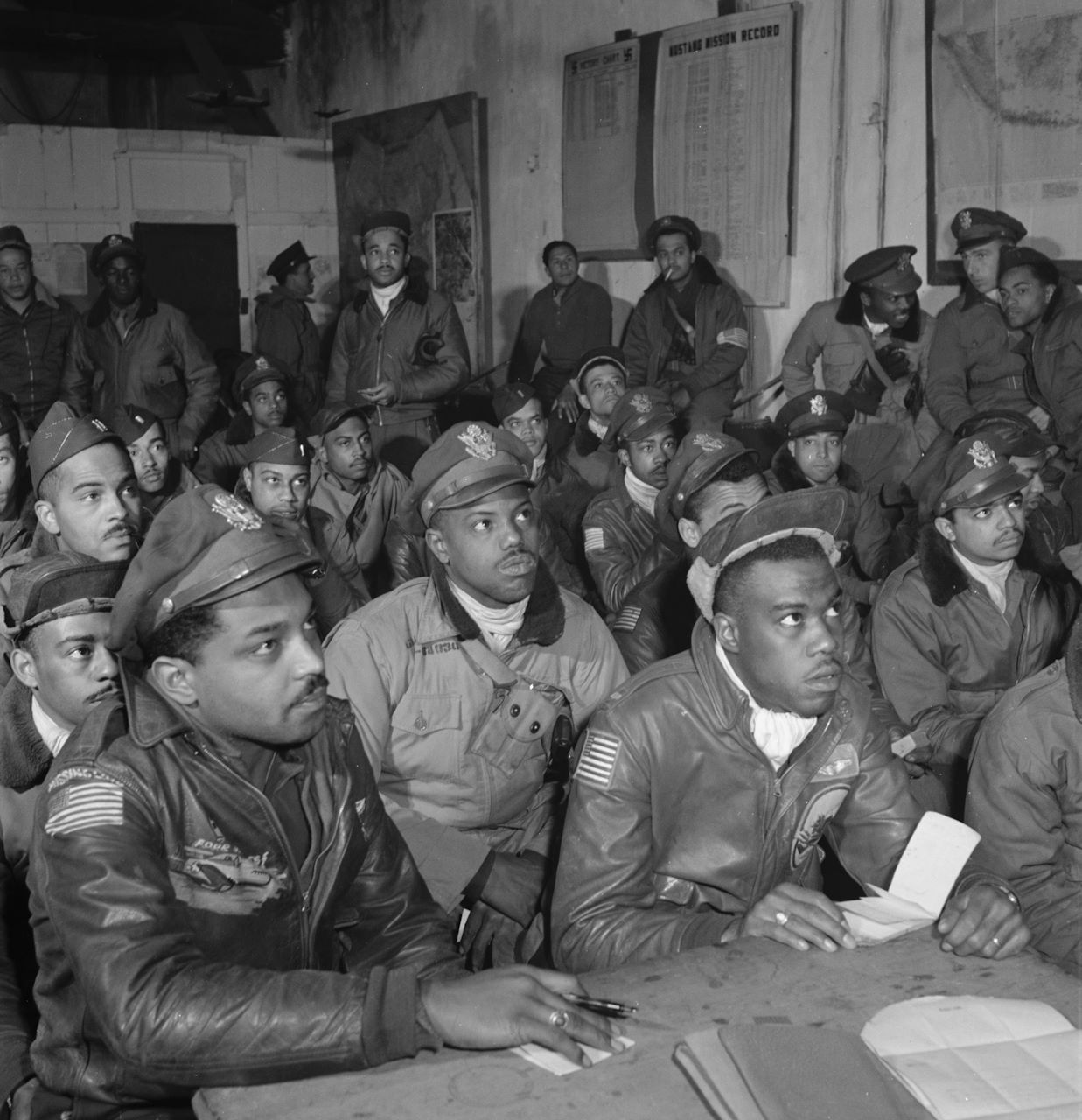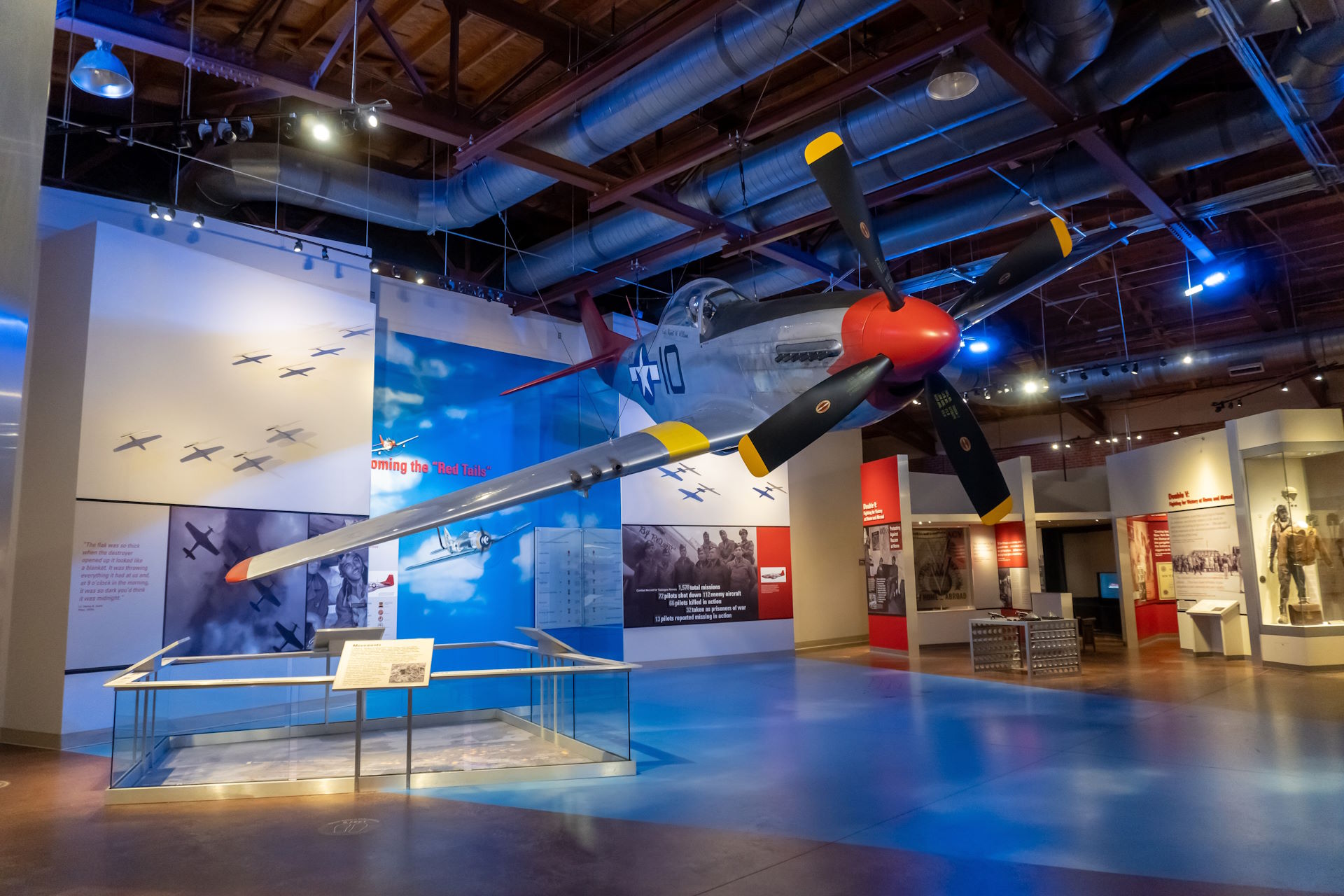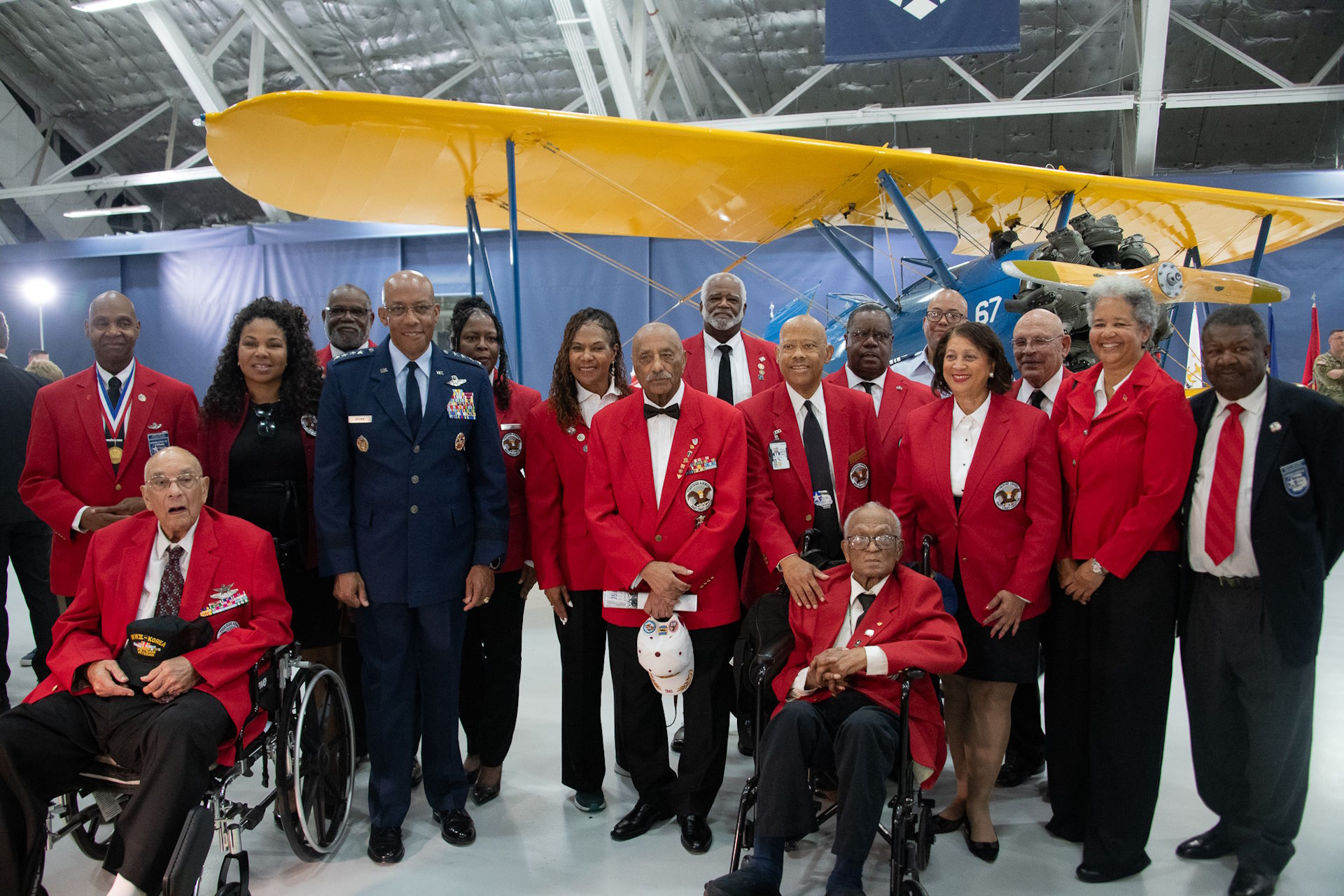Resources
Visit Homeschool History to explore resources related to this podcast.
Transcript
Ray Notgrass: On today’s Exploring History podcast, we’ll tell the story of the Tuskegee Airmen.
Titus Anderson: [music in background] Welcome to Exploring History with Ray Notgrass, a production of Notgrass History.
Ray Notgrass: On March 29, 1941, First Lady Eleanor Roosevelt took a plane ride. This was not unusual, since she was an active first lady. What was unusual about this particular plane ride was that the pilot was an African American man, and the plane was a small Piper Cub. The first lady was visiting all-black Tuskegee Institute in Alabama, and she asked the head of the school’s Civilian Pilot Training Program, Charles “Chief” Anderson, to take her up in a plane. Her Secret Service detail didn’t like the idea and they called the president, but he said that, well, no one could stop her. The flight was uneventful, and it turned out to be a major step toward including African Americans in the federal government’s military pilot training program.
Through most of 1941, the United States was not directly involved in World War II, even though the war was engulfing much of the globe. However, the U.S. had begun preparing for its likely entrance into the war. Military planners assumed that America would face an increased need for military pilots. Therefore, in 1939 Congress enacted a program to train pilots. But there was a problem. This was during the time when black Americans endured segregation and discrimination and when many white Americans treated their black fellow citizens as second class. Some even believed that black persons did not have the intelligence or skills to fly an airplane.
Therefore the military pilot training program that Congress created did not include black students. After Mrs. Roosevelt’s flight with a black pilot, President Roosevelt authorized funding for a military pilot training program that would include African Americans at Tuskegee Institute and at other locations around the country. Since many people were skeptical about the program, its nickname was the Tuskegee Experiment.
The program at Tuskegee began in August 1941. Each training class lasted 9 months. The student pilots started their training in old-fashioned biplanes, as did many pilots in such programs. The students took their first solo flight after about six hours of training. The program included not only training for pilots but also training for ground crews, control tower communicators, those who prepared parachutes, doctors, nurses, and many other support roles. It was one of the first military training programs to include women.
However, it was not until April of 1943 that black flyers received orders to fly missions.
Their first assignment was in North Africa. Their role was to fly fighter planes as escorts for heavy bombers. This was an important task. The bombers were larger, slower planes, so they were especially vulnerable to enemy attacks. The black crews on the escort fighters did a great job. They effectively protected the bombers, as well as servicemen and civilians on the ground, from enemy attacks. After Allied forces liberated North Africa from German occupation, the Tuskegee Airmen were sent to the European mainland as the American war effort shifted to that continent.
By the end of the war, the program at Tuskegee had trained almost 1,000 pilots. All those who completed their training there became known as Tuskegee Airmen. At first white air crews did not want to fly with African American crews. But these airmen that had come through programs such as that at Tuskegee established such a remarkable record that, as the war progressed, white flyers began asking for crewmen trained in programs for black persons. The Tuskegee Airmen earned over 100 Distinguished Flying Crosses, 14 Bronze Stars for meritorious service, and 8 Purple Hearts for injuries in combat. During the war, air crews usually painted their planes with distinctive markings. The Tuskegee Airmen painted the tails of their planes red, and so they became known as the Red Tails.
But generally speaking, the military remained strictly segregated. Military units were either all white or all black. They slept in segregated barracks and ate in segregated mess halls. White officers could command black troops, but black officers could not command white troops. Make no mistake, all American troops in whatever roles they filled were vulnerable to attack by the enemy, but generally black troops filled mostly support roles such as truck drivers and cooks. When the newly trained pilots were sent across the Atlantic on troop transports in 1943, white troops and black troops traveled together. Black officers held the highest ranks on some ships, so when this was the case, black officers commanded white troops for the first time.
The Tuskegee military pilot training program ended in 1946, and the base was closed in 1947.
When the capable and war-weary Tuskegee Airmen and other black troops returned home to the United States, they still had to face a segregated and discriminatory military and society. Despite their bravery in battle, black people still could not eat in most restaurants that served white people, and their children could not, for the most part, attend schools with white children, they couldn’t sit in the same sections in movie theaters, and in many places they couldn’t even drink from the same water fountains, and on it went. But the valor and effectiveness of the Tuskegee Airmen–as well as Eleanor Roosevelt’s plane ride in March of 1941–did much to start turning the tide of Americans’ thinking.
In 1948 President Harry Truman issued an executive order desegregating the military. Unfortunately, resistance by some military personnel and the time required to change the way the military operated prevented this from happening quickly. But it did happen. Then six years after Truman’s executive order came the Supreme Court’s Brown v. Board of Education decision declaring enforced separate schools to be unconstitutional. The battle for equality at home continued in the civil rights movement and achieved important victories with the 1964 Civil Rights Act and the 1965 Voting Rights Act. The effort did not end there, but the tide had definitely turned.
One of the last surviving Tuskegee Airmen, retired and decorated Lt. Col. Harry Stewart Jr., died a few days ago at the age of 100. The number of living veterans of World War II gets smaller and smaller. The Tuskegee Airmen did not want special treatment, just equal treatment. The Tuskegee military pilot training program was a success. History no longer calls it the Tuskegee Experiment, but the Tuskegee Experience. It is good that we remember and honor the courageous Tuskegee Airmen, who fought two wars--against aggressor nations abroad and against unjust treatment at home--and won them both.
I’m Ray Notgrass. Thanks for listening.
Titus Anderson: This has been Exploring History with Ray Notgrass, a production of Notgrass History. Be sure to subscribe to the podcast in your favorite podcast app. And please leave a rating and review so that we can reach more people with our episodes. If you want to learn about new homeschool resources and opportunities from Notgrass History, you can sign up for our email newsletter at ExploringHistoryPodcast.com. This program was produced by me, Titus Anderson. Thanks for listening!
Visit Homeschool History to explore resources related to this episode.



